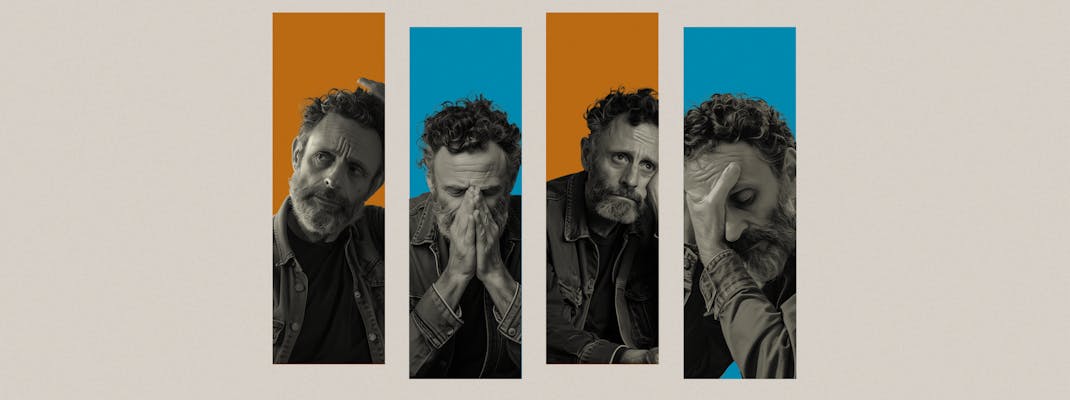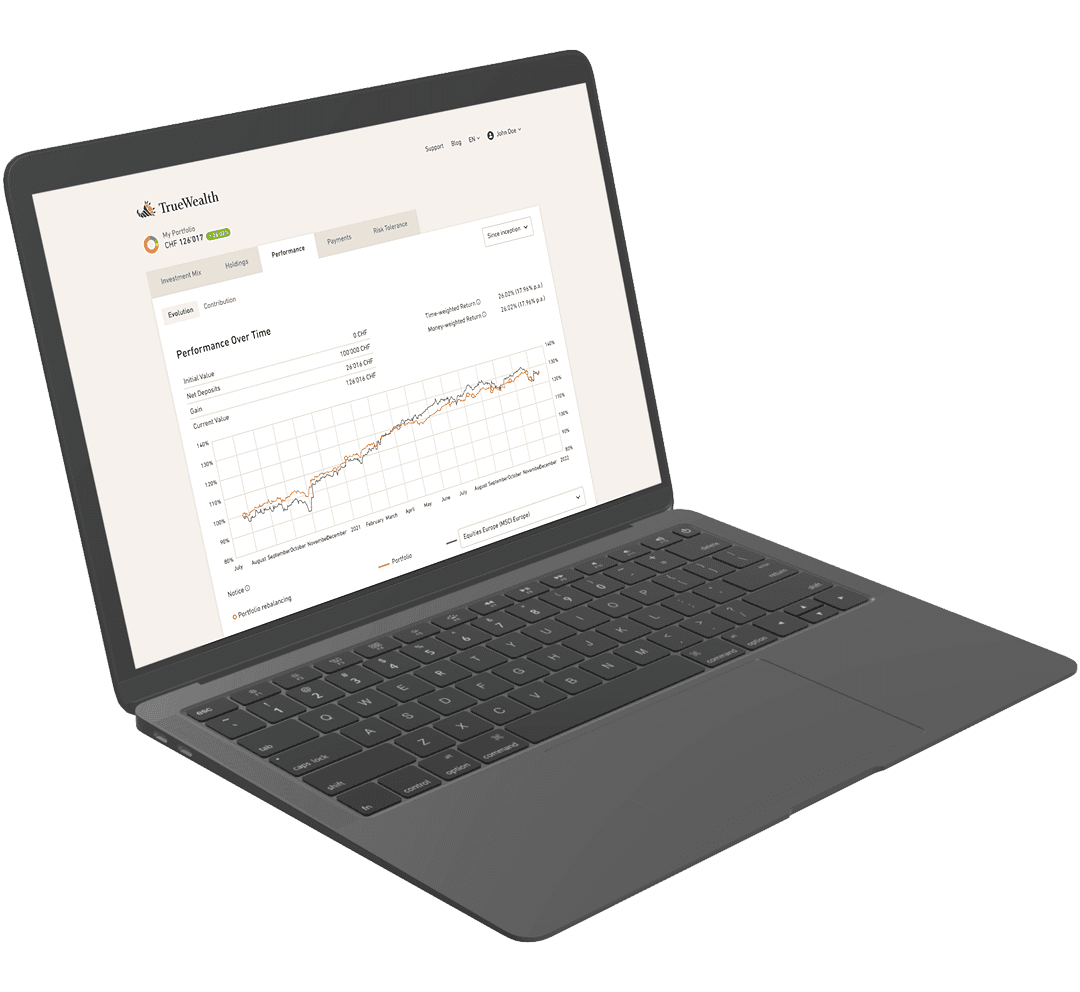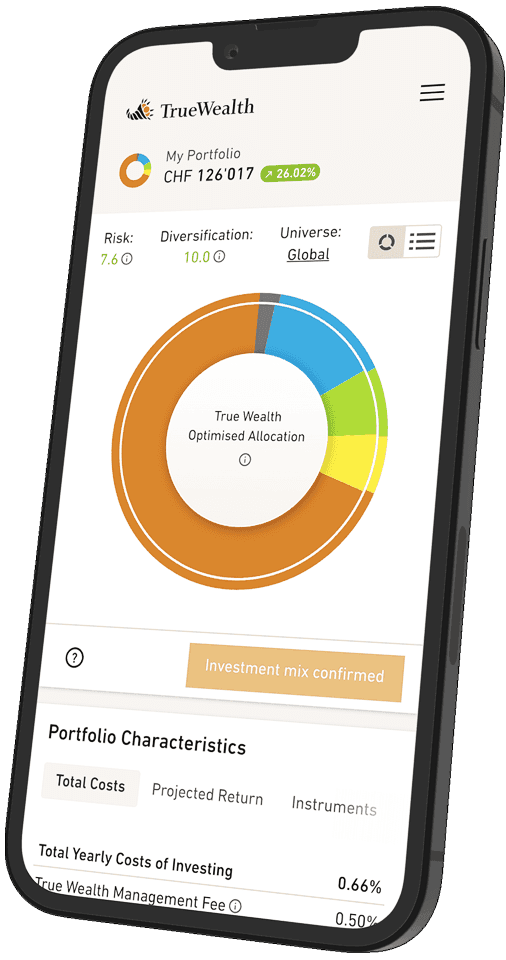
The 9 most common investment mistakes – and how to avoid them
Investing your money instead of leaving it in your bank account means you can expect a better return in the long term. However, many investors make mistakes that jeopardize their investment success. Below we take a look at the nine most common investment mistakes and how to avoid them.
Investment mistake 1: Not being invested
Remaining in the comfort of the status quo is rarely promising. This also applies when it comes to building up or preserving assets.
Leaving assets in the bank account means missing out on potential returns, the long-term effect of which is often underestimated.
Of course, investing money can be emotionally exhausting - you have to come to terms with your own risk capacity and risk appetite. And you have to endure fluctuations in the value of your portfolio. But that's exactly what investors are rewarded for in the long term.
Doing nothing can have a major impact on your financial situation. If you invest CHF 1'000 a month in shares, you will have almost CHF 300'000 more after 25 years than you paid in thanks to compound interest - assuming an effective market return of 5%. In addition to not being invested, there is also the gradual loss of purchasing power due to inflation (see True Wealth compound interest calculator).
Investing involves risk, and there are ups and downs on the way to your goal. That's why you need an investment strategy that suits your personal risk capacity and appetite.
Investment mistake 2: No strategy
Stock markets are subject to strong fluctuations. There is only one way to counter this: a good investment strategy.
An investment strategy should always be as risky as possible, i.e. contain as many risky asset classes as possible - but only enough to ensure that you can still stick to your strategy after a sharp market slump (mentally, but also due to your personal financial situation).
This is because anyone who gets cold feet after a sharp market correction and starts to sell investments or switches to an investment strategy with less risk will realize the loss and no longer participate in the subsequent market recovery. Such procyclical investment behavior then acts like a ratchet.
A good investment strategy is therefore tailored to your personal situation and risk appetite.
Investment mistake 3: Putting all your eggs in one basket
Investing your entire capital in one or just a few stocks involves a considerable risk of loss. No company in the world is immune to failure; history shows that even large companies with a long history of success can go bankrupt, just think of Lehman Brothers, Enron or Credit Suisse (the major Swiss bank did not go bankrupt, but had to be rescued and caused severe losses for investors). From an investor's point of view, a company does not even have to go bankrupt for a loss to occur; it is enough if its share value collapses.
A better strategy is to keep your portfolio diversified and spread the investment risk across different asset classes, regions and industries.
In practice, this means: instead of a handful of shares, an entire stock market. Instead of a few bonds, a broad basket of bonds. Instead of just Swiss securities, a globally diversified portfolio. Instead of just one asset class, various (liquid) asset classes such as equities, bonds, real estate and commodities.
The good news: diversification costs nothing.
In short: «Don't look for a needle in a haystack. Just buy the haystack», to quote the legendary ETF pioneer John Bogle.
In the following blog you can find out why ETFs are the first choice: 5 Reasons why we build portfolios from ETFs.
Investment mistake 4: High costs
The compound interest effect is the reliable co-pilot of every investor. It ensures that the value of assets increases faster and faster by continuously reinvesting current profits.
High costs, on the other hand, have the opposite effect and act like sand in the gears. If you achieve a net return of 4% instead of 5% due to high costs, it takes 18 years instead of 15 to double your initial capital. And many investment costs are hidden (e.g. product costs or exchange rate premiums when changing currencies).
In short: an expensive investment solution costs you 3 investment years. What starts small makes a significant difference in the long term.
It is worth investing some time when choosing an investment solution and paying attention to cost efficiency, independence and transparency.
Investment mistake 5: Home bias
We often prefer the familiar to the unknown. The familiar feels safer.
This is a primal instinct that was vital for the survival of our ancestors. In the case of investments, it leads to a tendency to give disproportionate weight to investments in the home market. This is not a Swiss phenomenon, but can be observed all over the world.
A slight overweighting of the domestic market or your own currency area is not necessarily a bad thing. An investment strategy for an investor in Switzerland, for example, should take into account that future financial needs and expenditure are likely to be in Swiss francs.
However, a common misconception is that securities do not carry currency risk if they are traded in Swiss francs. For example, many ETFs on the Swiss stock exchange are traded in both Swiss francs and US dollars or euros. Although this can help to avoid currency changes, the currency exposure remains the same. Many Swiss blue chips also generate a high proportion of their sales abroad; in the case of Nestlé, this figure is around 99%. The share reacts accordingly to fluctuations in the Swiss franc.
Anyone who sees the overweighting of Swiss equities as an instrument for reducing volatility should be aware of this and align their investment strategy accordingly. Only those who are invested globally can participate fully in the opportunities of the global market.
Investment mistake 6: Active management
It is notoriously tempting to try to buy the next share at a low price and sell it a little later at a high price. After all, if you look at price charts, the ideal times in the past are clear.
However, the development of the financial markets, especially in the short and medium term, is unpredictable. In times of high volatility, fear and loss aversion take effect. In a crash, many sell in panic (often because they have to). Conversely, in a bull market, nobody wants to be left out and many chase trends. Fear of missing out, also known as FOMO, is spreading.
Active management statistically leads to underperformance after costs - more and more from year to year. After 10 years, 85% of active funds have already been beaten by the market. And there is no way of recognizing the winners; past returns are a poor indicator of future results.
It is better to avoid market timing altogether and take advantage of a passive, index-oriented investment strategy regardless of the market situation. Regular payments by standing order make the tedious but stressful question of the right time to invest superfluous.
By the way: With True Wealth, deposits and withdrawals cost nothing extra and there are no trading commissions. These are included in the flat-rate management fee of 0.25-0.50%.
Investment error 7: No rebalancing
With rebalancing, the weightings of the asset classes are returned to the target strategy according to defined rules if they deviate too much from it. This has advantages over a pure buy-and-hold strategy.
Without rebalancing, the weightings of the individual asset classes would change over time. The proportion of equities could increase more and more over the years. This is associated with a higher loss potential than originally envisaged and the portfolio no longer corresponds to the personal risk tolerance.
Rebalancing therefore ensures that diversification is maintained in the long term and that fluctuations in value can be dampened in the future as intended.
Investment mistake 8: Too frequent transactions
«Back and forth empties your pockets.» This old stock market adage still holds true today.
Frequent buying and selling is often influenced by short-term market fluctuations or emotional reactions to news and can lead to suboptimal results in the long term, as every purchase and sale on the stock market is associated with costs and can therefore reduce returns.
Too much buying and selling can also lead to increased nervousness. It tempts you to keep checking your portfolio and react to supposedly risky or lucrative situations. In addition to direct transaction costs, this also results in opportunity costs, as temporary exits from the market can lead to missed price gains. Emotions such as fear and greed can lead to impulsive decisions, which usually have a negative impact in the long term.
It is better to define long-term goals and pursue a disciplined investment strategy based on sound principles. This involves regularly reviewing and, if necessary, adjusting the portfolio (for example, if your personal financial situation changes), but based on long-term considerations rather than short-term trends or emotions.
Investment mistake 9: Following the herd
People generally tend to follow the behavior of others. This is also a basic instinct: Following the crowd often protected individuals from danger or social exclusion in prehistoric times (but has also been known to lead entire societies into catastrophic abysses in modern times).
In the investment sector, the «herd instinct» describes the phenomenon that investors tend to follow the crowd and invest in certain assets simply because they are currently in vogue.
A classic example of the herd instinct is the dotcom bubble at the end of the 1990s. At the time, many investors invested heavily in technology stocks, which rose sharply in value due to the hype surrounding the internet. When the bubble burst, everyone rubbed their eyes.
To avoid the herd instinct, it is important to maintain an independent mindset and make well-founded investment decisions independently of the mainstream. And to take a long-term perspective whenever possible.
Broad diversification across different asset classes, industry sectors and regions also helps to avoid the herd instinct.
About the author

Founder and CEO of True Wealth. After graduating from the Swiss Federal Institute of Technology (ETH) as a physicist, Felix first spent several years in Swiss industry and then four years with a major reinsurance company in portfolio management and risk modeling.

Ready to invest?
Open accountNot sure how to start? Open a test account and upgrade to a full account later.
Open test account